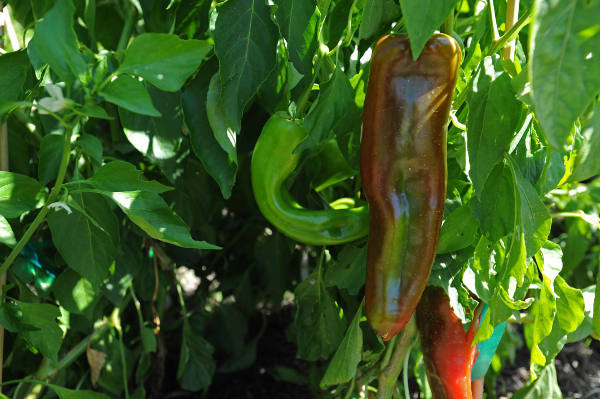
In spite of higher costs for fuel and fertilizer and the difficulties of finding enough labor to hand pick what is being called a healthy crop of enchanted New Mexico Hatch green chili peppers, harvest is getting underway south of Socorro, a welcome development for farmers and consumers.
"We live for this time of year," says Susana Lopez-Manzilla, a farm laborer in Las Cruces who says she often waits in line every morning during harvest season to catch a ride to chili fields across Southern New Mexico. "It's not just a time for work but a time to celebrate a food that has made New Mexico famous."
For the latest on southwest agriculture, please check out Southwest Farm Press Daily and receive the latest news right to your inbox.
Famous indeed. In spite of growing competition, mostly from south of the border in Chihuahua and Durango, New Mexico chili, especially the varieties that grow around Hatch, New Mexico, just south of Caballo Lake, is the unofficial king of crops in the Land of Enchantment. Known far and wide for its unique “New Mexico” flavor, Hatch chili peppers are roasted at roadside stands and parking lots of supermarkets all across the state and to expanding markets in Arizona and Texas.
Culture and tradition
According to the New Mexico Chile Association, the fertile Hatch and Rio Grande River Valleys in New Mexico grow “the best green chili peppers” in the world. For generations, chili has been the pride and joy of New Mexican culture and tradition and the heart and soul of local cuisine. So it comes as no surprise that harvest time in southern New Mexico is more than a signal of the coming fall, it's a way of life.
Early reports indicate the new chili pepper crop is abundant and in of good quality, but not all things are good for the state's declining pepper industry. A multi-year drought remains a major hurdle and increasing farm labor shortages threaten the industry a problem that is getting worse every year.
Also, an increased and robust demand for New Mexico chili around the country is being choked by cheaper foreign impostors, often packaged as “official New Mexico chile,” a growing problem state agriculture officials have been addressing in recent years.
Even New Mexico's state legislature has gotten into the fight to stop impostors from cashing in on the fame and popularity of the state's favorite crop.
“What we’ve got is people coming in and selling chile and saying it’s from New Mexico, and some of it is being shipped in from Mexico or elsewhere,” said former State Representative and current Mayor of the Village of Hatch Andy Nuñez, a one-time chile farmer who as a state legislator sponsored the New Mexico Chile Advertising Act. “We were trying to protect the integrity of New Mexico chile, which we believe is the best.”
New Mexico Chile Association officials say that is why chili peppers in New Mexico are officially spelled with the letter 'e', as in chile, to differentiate the New Mexico 'chile' from fake impostor varieties.
The Chile Advertising Act makes it illegal to sell or advertise any product as New Mexico 'chile' unless the peppers are certified as grown within the state. The state’s Agriculture Department is charged with helping to enforce the rule.
Declining acreage
The concern over the integrity of the New Mexico chili pepper crop is understandable. While the annual crop is an estimated $400 million industry in total revenue generated at all levels (farming, shipping, retail), the industry has declined extensively through the years. In 1992 the state harvested nearly 35,000 acres, but total acreage has fallen since then to an estimated 9,000 acres or less.
Overall, revenue generated from wholesale peppers at the farm level has dropped to an estimated $49 million, down about 16 percent over the last two years.
Experts say while input costs are and foreign competition has cut deeply into profits, the biggest problem remains the ability to find enough farm workers to harvest a crop that must be hand-picked.
Officials say though competitive wages are offered, are few are willing to work the required long hours to get the crop out of the field fast enough before the chili begins to over-ripen.
State agriculture officials say while a lack of irrigation water has been offset by groundwater pumping and beneficial rains both this year and last, the shortage of farm labor can only be addressed by federal legislation.
In spite of the problems, in spite of recent declines in total chili acreage, there is an abundance of healthy chili peppers in southern New Mexico and harvest is getting underway.
But with the growing demand for a smaller crop, chili lovers are advised not to wait before loading up on the flavors that so many have come to love.
About the Author(s)
You May Also Like




